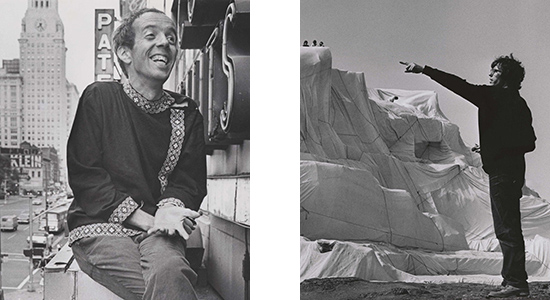Harry Shunk and Shunk-Kender Archive
Harry Shunk and Shunk-Kender photographs, 1957–1987
Though eventually based in New York, Shunk and Kender traveled internationally to document numerous groundbreaking exhibitions in the late 1960s and early 1970s, including Harald Szeemann's landmark Live in Your Head: When Attitudes Become Form in 1969; several iterations of the Venice Biennale and the Paris Biennale; as well as Expo '67 in Montreal and Expo '70 in Osaka. In New York they photographed the seminal exhibition 9 at Leo Castelli, organized by Robert Morris in 1968 to introduce the art world to his concept of "anti-form" sculpture, and in 1970 they documented Software at the Jewish Museum, one of the first exhibitions to explore the effects of the information age on art. Shunk-Kender extensively documented nouveau réalisme artists and became an integral part of their tight-knit artistic circle, often staying at the artists' homes and traveling with them as they installed exhibitions and staged events. The pair met artists Christo and Jeanne-Claude, first shooting their wrapping of the Trocadéro in Paris in 1964, then becoming their de facto photographers—in a spirit more of collaboration than of strict documentation—for all subsequent site-specific projects into the 1970s. Shunk and Kender had also gained access to the art world across the Atlantic, forging relationships with Jasper Johns, Roy Lichtenstein, Claes Oldenburg, Robert Rauschenberg, James Rosenquist, George Segal, and Andy Warhol. Echoing this transatlantic aspect of the pair's career, the consortium established by the Lichtenstein Foundation's donation includes Centre Pompidou, the Getty Research Institute, the Museum of Modern Art, the National Gallery of Art, and Tate Modern. Learn more about the consortium and how the archive was divided among its five members on the Roy Lichtenstein Foundation website. | |||||||||


